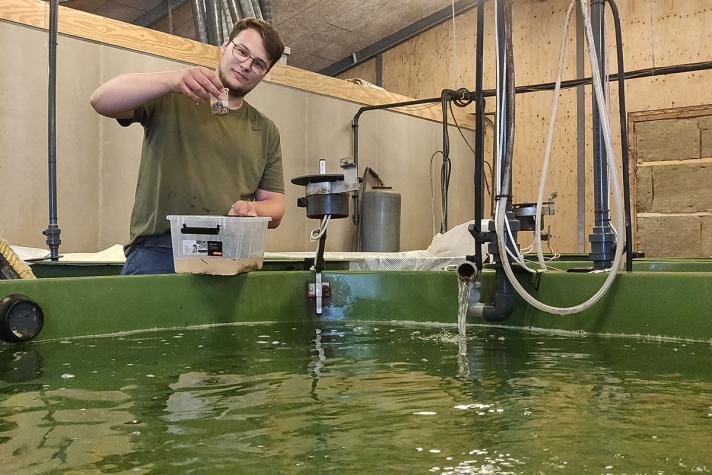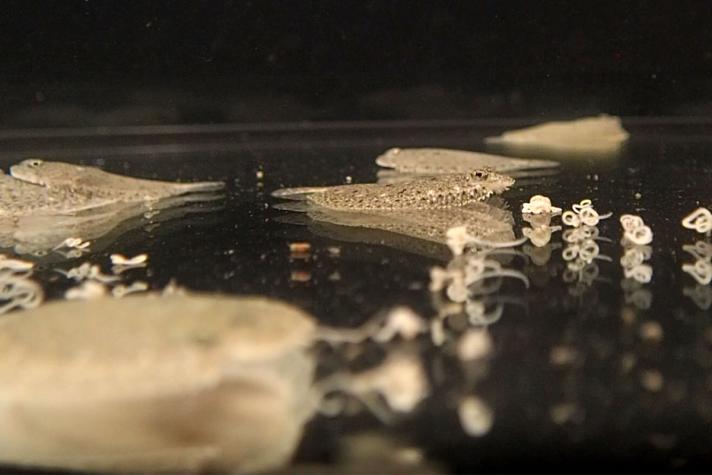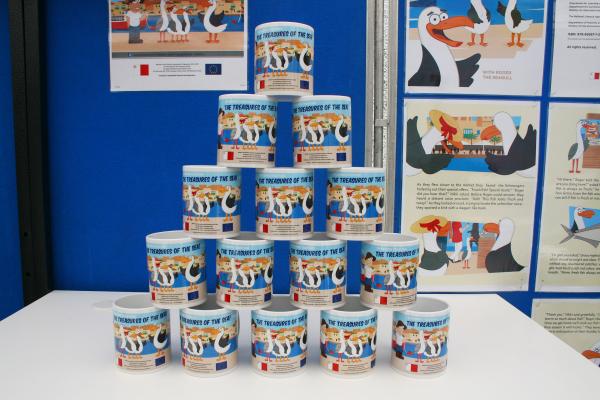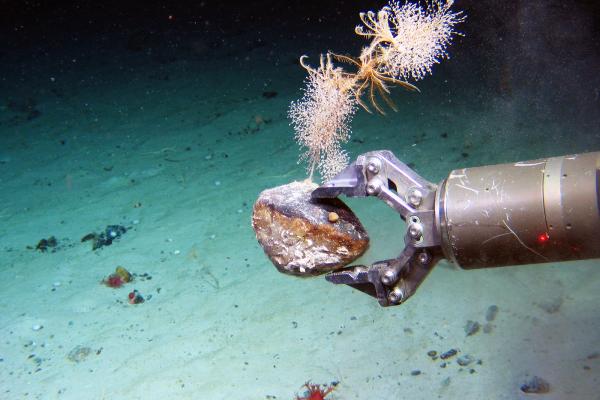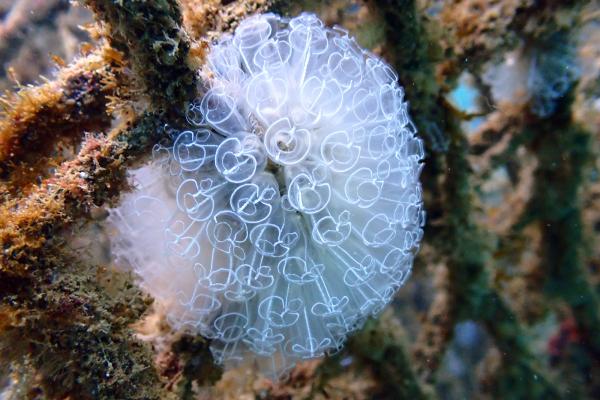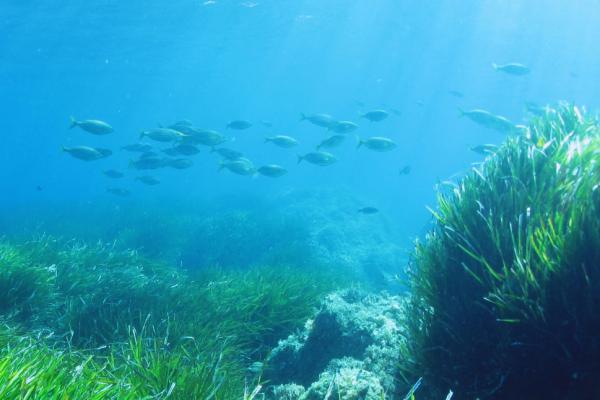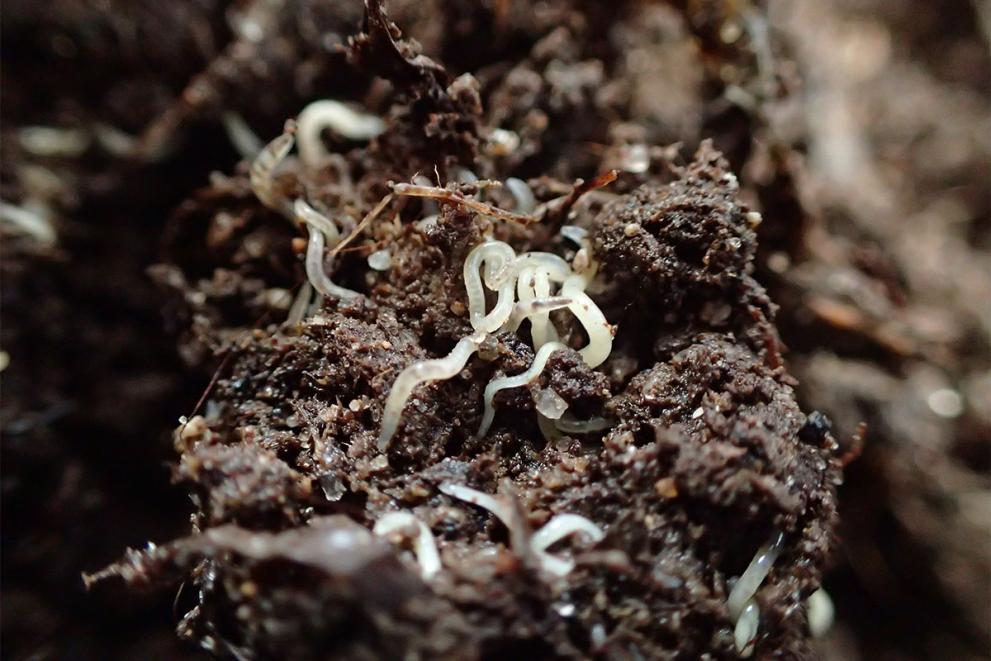
With the help of EMFF funding and a bit of Danish ingenuity, researchers are exploring innovative production techniques that could revolutionise aquaculture as we know it.
Today, fish fry production is based almost exclusively on rotifiers (microscopic, aquatic invertebrates) and Artemia (tiny crustaceans), which need to be enriched with fish oils or algae before use. This process is not only costly and time-consuming but the nutritional quality of these types of feed is not ideal.
Enter Aarhus University, where researchers, supported by EU funding, have discovered a way to utilise decomposing seaweed to mass produce marine enchytraeids, small worms naturally found in decaying seaweed.
The project has shown that feeding with live enchytraeids can increase growth rates of juvenile fish (i.e. turbot, European flounder and common whitefish) by up to 200% and lower overall mortality.
3 good reasons to use these small enchytraeid worms
- The enchytraeid worms have an ideal nutrient composition, containing high protein and lipid content and abundant long chain omega-3 fatty acids.
- Enchytraeids can grow sustainably in a terrestrial environment, on industrial organic residues, and replace marine food sources, thus reducing fishing pressure on the marine environment.
- By using enchytraeid worms as live feed, fish farmers can postpone weaning onto dry feed until fish are large enough to optimally utilise dry feed.
With this project, researchers explored optimal production conditions, developed efficient extraction procedures, and tested the utility of enchytraeids as juvenile feed for six species of cultured fish.
Optimal production conditions: Enchytraeus experienced the highest growth rate at temperatures of 15-22 °C and a substrate salinity between 8 and 15 parts per trillion. In laboratory trials, using potting soil mixed with dried and re-wetted seaweed as a substrate, approximately 90 g of fresh biomass per L substrate could be produced every three months. Scaling up to a semi-industrial level, the team achieved around 200 g of fresh biomass per 6 L of substrate every two months with minimal manpower and low running costs.
Extraction process: The researchers also developed a highly efficient (>90% efficiency) extraction procedure based on heat extraction. Laboratory experiments indicated that enchytraeus can synthesise essential omega-3 fatty acids independently, making them a valuable protein source for fish feed, with about 50% protein on a dry weight basis.
Test with fish species: Additionally, the team tested the utility of live enchytraeus as feed for young juveniles of six species of cultured fish. Turbot, flounder and white fish grew significantly better on live worms than on a standard dry feed. Halibut and ballan wrasse grew just as well, although it was determined that enchytraeus was not a suitable live feed for kingfish.
Although more investments and increased awareness may be necessary for enchytraeids to have the kind of impact that researchers foresee as a possibility, the support from the European Maritime and Fisheries Fund was fundamental in exploring innovative and sustainable changes to the aquaculture industry.
More information
Scientific Article on the project: Enchytraeids as Live Feed for Aquaculture – Development of Mass Production and Cryopreservation — Aarhus Universitet (au.dk)
Poster of the project: Industrial_PhD_Poster_90x120cm_Mathias Engell Dahl Holmstrup.pdf (au.dk)
Details
- Publication date
- 5 February 2024
- Author
- Directorate-General for Maritime Affairs and Fisheries

